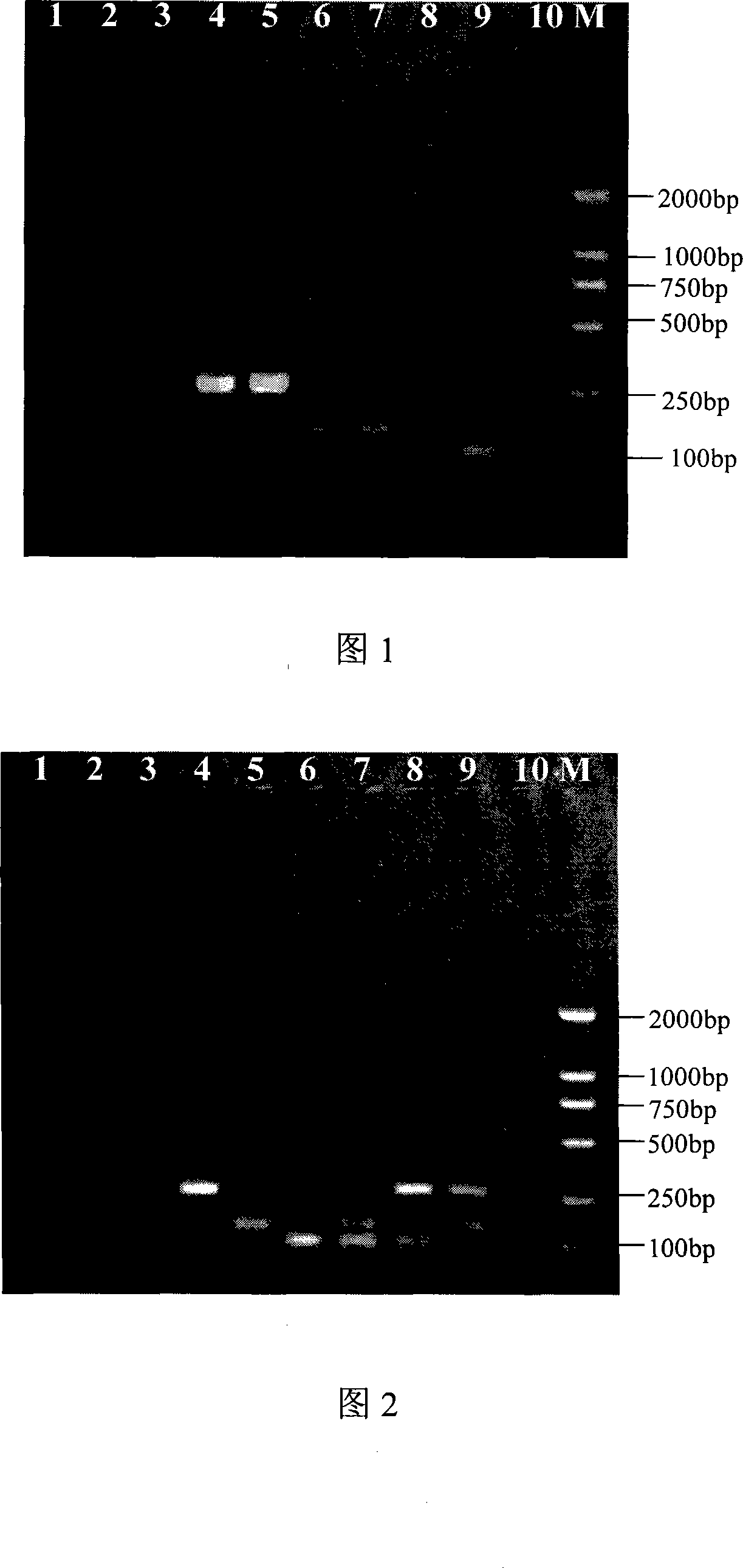Type H5 and H9 avian influenza virus and multiple detection method for newcastle disease virus
A technology for Newcastle disease virus and avian influenza virus, applied in biochemical equipment and methods, microbial determination/inspection, etc., can solve the problems of long detection cycle, difficult detection, scattered virus in the surrounding environment, etc., to achieve identification and serological credit. The type test method is fast, has a wide market application prospect, and the effect of few types of reagents
- Summary
- Abstract
- Description
- Claims
- Application Information
AI Technical Summary
Problems solved by technology
Method used
Image
Examples
Embodiment Construction
[0020] The following are the embodiments of the present invention and comparative detection situations.
[0021] 1. Aseptically take the blood, tracheal and cloacal swabs or feces of sick poultry, and the organs and tissues of dead poultry, preferably the brain, spleen and lungs of poultry, and grind them into emulsion suspension with sterilized physiological saline (1: 5 dilution), and add 2000 IU of penicillin and streptomycin to each milliliter, divide into vials, label them and store them at -80°C for later use; use the Trizol method to extract virus genes, including viral genes, from blood, throat and cloacal swabs, and tissues Whole genome RNA; at the same time, aseptically extract the blood of healthy poultry, and also use the Trizol method to extract tissue genome RNA to be used as a negative control.
[0022] 2. Primer design, a total of 3 pairs of primers were designed. The target genes of each primer are the highly conserved region genes of H5 and H9 avian influenza...
PUM
 Login to View More
Login to View More Abstract
Description
Claims
Application Information
 Login to View More
Login to View More - R&D
- Intellectual Property
- Life Sciences
- Materials
- Tech Scout
- Unparalleled Data Quality
- Higher Quality Content
- 60% Fewer Hallucinations
Browse by: Latest US Patents, China's latest patents, Technical Efficacy Thesaurus, Application Domain, Technology Topic, Popular Technical Reports.
© 2025 PatSnap. All rights reserved.Legal|Privacy policy|Modern Slavery Act Transparency Statement|Sitemap|About US| Contact US: help@patsnap.com

